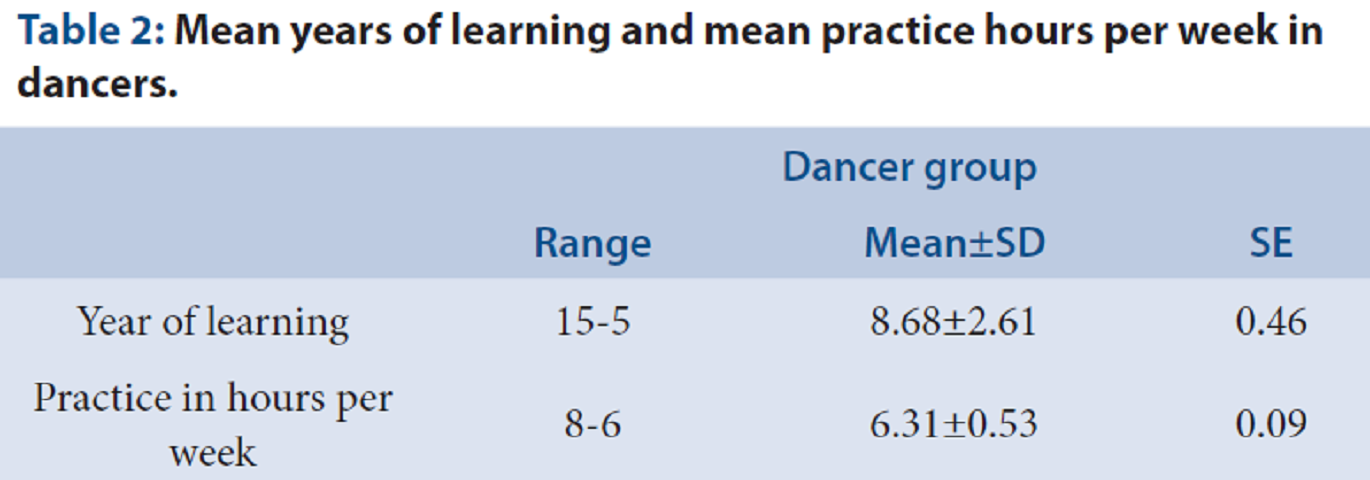Assessment of Lower Limb Flexibility in Female Bharatanatyam Dancers
Abstract
Background and Aim: Bharatanatyam is one of the Indian classical dance forms. Aramandi which is similar to Demi plie position of ballet dancers and Muzumandi are the commonest poses in this dance form. Attaining these poses requires adequate range of motion at the joints and so flexibility is considered as an essential element of normal biomechanical functioning in dance. The objective of the study was to assess the range of motion at hip, knee and ankle joints using goniometer and compare the results between dancers and nondancers. Methods: Thirty-two bharatanatyam dancers and 33 non-dancers in the age group of 18-23 years participated in this study. The range of motion for different movements at hip, knee and ankle joints was assessed using goniometer. Data obtained was expressed as mean±SD and independent t test was used to compare the data. Results: Dancers had a significantly higher range of motion for flexion (P=0.002) and abduction (P<0.001) at hip joint. Range of motion for external rotation was higher in dancers than non-dancers but not statistically significant. Conclusion: This study showed that dancers had higher range of motion for some movements at hip joint but flexibility did not differ from non-dancers at knee and ankle joints. Additional physical training techniques can be employed to improve the flexibility which will reduce incidence of injuries and improve performance.






